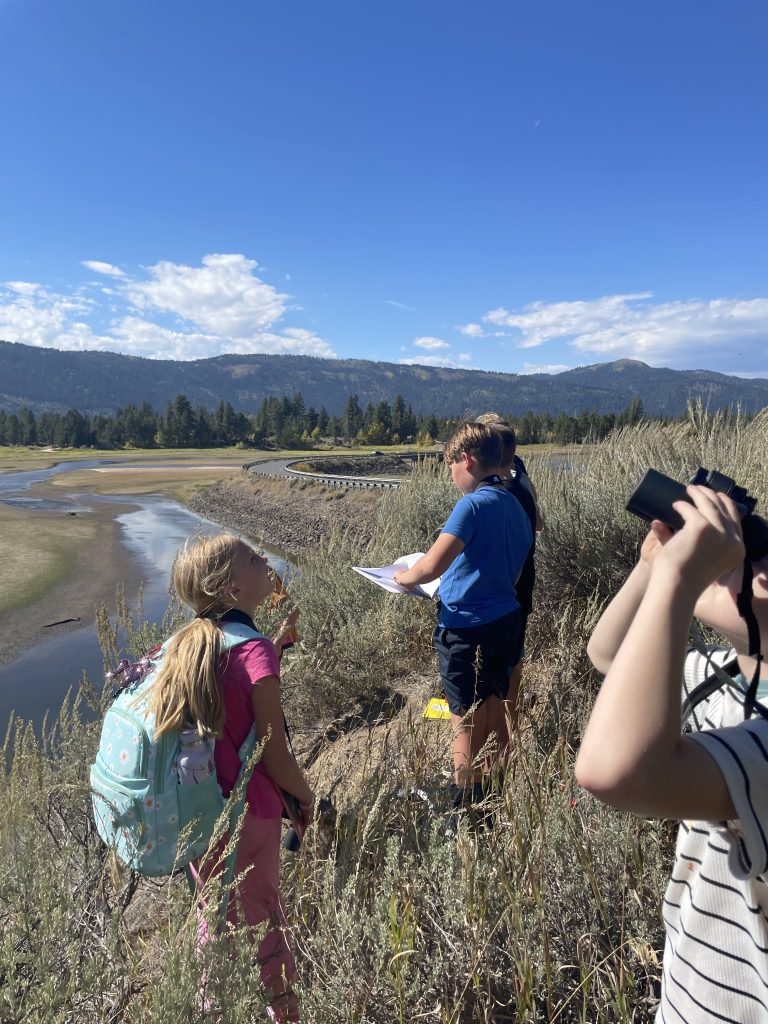Place-based education is relevant, engaging, and made to stick. The purpose is to bring the local community into the classroom and the classroom out into the community.This encourages student engagement, increases retention of material, broadens student perspectives and experiences, and builds student confidence that they can make a difference
Place Begins With the Self
The first key idea of Place-Based learning is starting with the self. An understanding of the self is a starting place for understanding the community and the world. Likewise, each student has a unique perspective to bring to the classroom. As one of the Habits of Success, each student learns about self-awareness, and how to honor their own perspectives while also recognizing and honoring those of their classmates. This self awareness and perception of others is an important trait of effective and inspiring leaders of the future.
Real World Learning
The second key idea of Place-Based learning is Real World Learning. Instead of separating knowledge acquisition into its own activity, done only in school, place-based schools use existing local resources to show how this knowledge is immediately relevant to solving a problem.
For example, studying Ancient Rome might provide some history into how democracy formed. But just what is a democracy? This can be studied immediately in the context of the classroom and the school (is it a democracy?) or by examining the workings of local governments on issues of importance to children (e.g. how do we get new play equipment at Browns Park?). The personal relevance of the issues increases engagement, and increased engagement leads to better retention of the concepts. Once a child has some context for democracy, studying the formations of it can become an interesting pursuit that is retained and even used to improve our existing systems.
Connections with the Wider Community
A third key idea of Place-Based learning is bringing the community and the classroom closer together. This means the people, the spaces, and the culture of our local community.
Our community is full of people who can provide immediate connections to how learning is applied in the real world. Hearing from local experts, or even every day Moms and Dads, on the skills and knowledge they use every day provides a connection to the adult world. Connecting learning from school to how adults operate is inspiring to children who are looking to make a place in the world. Likewise, many adults would like to have the opportunity to connect with youth and pass along some of what they have learned. Place-based education provides a structure and opportunity for local community members to enhance and deepen learning that is already part of the classroom, becoming real partners in education.
By expanding the idea of classroom into the community and using a hands-on approach, students are given the opportunity to connect to the culture, economy, and ecology of local places. This understanding of the local helps students expand and develop a better understanding of the world and become more thoughtful and active citizens in their own community and beyond.
(Figure)
—————-
(The following was from a table of the 6 PB principles. Would it be helpful or more confusing to include it? I didn’t explicitly touch on each of the items in the above text but the first 4 are covered above. The last 2 are covered more under project based learning.)
Place-based Education Principles
Community as classroom
Students use the community as the classroom to connect with people, places, organizations, and businesses to better understand content and relevance.
Local to global
Students connect the project to local, regional, and global context.
Inquiry
Project is designed with deep levels of inquiry where students start with documenting previous knowledge/skills, identifying knowledge/skills to be learned, and reflecting on learning as assessment.
Design thinking
Projects are based on solution making and use the design thinking methodology to come up with innovative solutions.
Learner-centered
Students have opportunities to add voice and make choices in the direction and tasks within the project. Project taps into individual students’ passions and talents.
Interdisciplinary
Multiple subject areas are integrated within the project.

